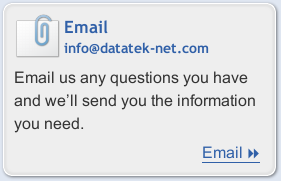Resources
Discover 5 Ways an Automated Language Conversion
Can Save Your Company Both Time And Money
Manual rewrites are notorious for time and materials (T&M) cost-overruns, endless delays, lost or broken functionality, redesigns, long debugging cycles and other nightmares. Whether you outsource a manual conversion or rewrite in-house, these and other problems are a serious threat to a successful conversion. But what other option do you have?
According to the Standish Group CHAOS Summary 2009 Report, only 32% of all projects are successful in delivering “on time, on budget, and with the required features and functions.” In other words, 68% of all projects fail in one or more of the three categories: time, budget, and scope. By using an automated language conversion service, you can avoid time and cost overruns and your converted application will be functionally equivalent to the original.
I. Automated Conversions are Cost Effective
A fixed-cost solution is your best protection against going over budget. Manual rewrites based on T&M are notorious for cost-overruns. What incentive does an outsourced, manual conversion have to finish? The longer it takes, the more they get paid. But even if you are using in-house personnel, pulling your best developers off income-generating projects means a loss of revenue. Using a fixed-cost, automated solution will protect your budget and help assure a successful conversion.
II. Automated Conversions are Fast
Complete your project on time by leveraging your current investment. One of the highest risks companies take when they want to convert their business application is to attempt to combine redesign with conversion. Reduce the risks by taking an iterative approach. By using a customized, automated conversion, your core application can be in production in the new language in the fraction of the time of a manual conversion.
The CHAOS Summary 2008 Report states that “Time is the enemy of all projects. The reason project plans do not survive their enemy is time changes the plan.” Disarm the enemy! Your best chance to convert successfully is to shorten the time between plan and completion. An effective automated solution enables you to move to a newer language without loss in business functionality — in a fraction of the time.
III. Automated Conversions are Consistent
Consistency is crucial for producing maintainable code. If the process is done manually, don’t expect clean, consistent code. Even if your company has coding standards in-place, large development teams manually converting code will write constructs differently. A mature automated solution will match existing or designated coding standards. Maintainable code translates to faster future maintenance and enhancement.
IV. Automated Conversions are Adaptable
Continue to be productive. The speed and accuracy of the automated compile | test | modify cycle allows developers the greatest flexibility. Sections of code can be quickly added and/or removed throughout the automated conversion. This allows you to continue to develop and add functionality to your application through most of the language conversion process. Code freezes are kept to an absolute minimum — keeping your company productive. This benefit is unobtainable in a manual conversion.
V. Automated Conversions are Reliable
Why worry about lost or broken functionality? When a bug is fixed by the automated converter, it is fixed throughout the entire body of code — saving you time, money and effort. When you attempt to fix a bug manually (often times with multiple developers), all instances of the bug may not be found. Human error often introduces new bugs into the system. An intelligent automated conversion will reliably convert your application — delivering a functional equivalent of the original. You can have confidence in the final product.
Make an Informed Choice
Avoid being late, going over budget, and completing your project with less than the required features. In addition to the five attributes outlined above, the right solution will combine a sophisticated tool set with breadth of experience and insight — the right tools in the right hands.
Resources
- Discover How Datatek Helped A Major American Retailer Save $900,000 Per Year
- 20 Questions Your Code Conversion Partner Better Have a Good Answer For
- All Automated Language Conversion Services Are NOT Created Equal
- Discover 5 Ways an Automated Language Conversion Can Save Your Company Time and Money
- Frequently Asked Questions
Resources
- Discover How Datatek Helped A Major American Retailer Save $900,000 Per Year
- 20 Questions Your Code Conversion Partner Better Have a Good Answer For
- All Automated Language Conversion Services Are NOT Created Equal
- Discover 5 Ways an Automated Language Conversion Can Save Your Company Time and Money
- Frequently Asked Questions
Related Services
Language Converions
System Migrations
More Info
Strategic Partners




How Can We Make This Website Better?
If you’ve discovered a mistake, an ambiguity, or that some important information is missing from this website, please let us know.
© Copyright Datatek, Inc. 1994-2025, All rights reserved. All trademarks belong to their respective owners.


